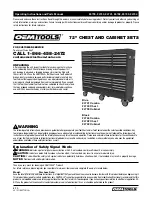
Glossary
This glossary defines the special terms, abbreviations, and acronyms that are used in this publication. If
you do not find the term you are looking for, refer to the index or to the Dictionary of Computing, 1994.
Numbers
2.5:1 compression
The relationship between the quantity of data that can be stored with compression as compared to
the quantity of data that can be stored without compression. In 2.5:1 compression, two and a half
times as much data can be stored with compression as can be stored without compression.
2:1 compression
The relationship between the quantity of data that can be stored with compression as compared to
the quantity of data that can be stored without compression. In 2:1 compression, two times as much
data can be stored with compression as can be stored without compression.
A
A.
See ampere.
ampere (A).
A unit of measure for electric current that is equivalent to a flow of one coulomb per second, or
equivalent to the current produced by one volt applied across a resistance of one ohm.
adapter.
A circuit board that adds function to a computer.
adapter card.
A circuit board that adds function to a computer.
B
backups.
The short-term retention of records used for restoring essential business and server files when vital
data has been lost because of program or server errors or malfunctions.
backward compatible.
Capable of being used with a previous product that was designed for a similar purpose. For example, a
tape cartridge that is designed to be used with a modern tape drive but can also be used with certain
older tape drives. Synonymous with downward compatible.
bezel.
The removable frame that fits over the front of the tape drive.
burst data transfer rate.
The maximum speed at which data is transferred.
byte.
A string that consists of a certain number of bits (usually 8) which are treated as a unit and represent a
character. A byte is a fundamental unit of data.
C
C.
See Celsius.
capacity.
The amount of data that can be contained on storage media and expressed in bytes.
60 Dell PowerVault LTO Tape Drive: User's Guide











































